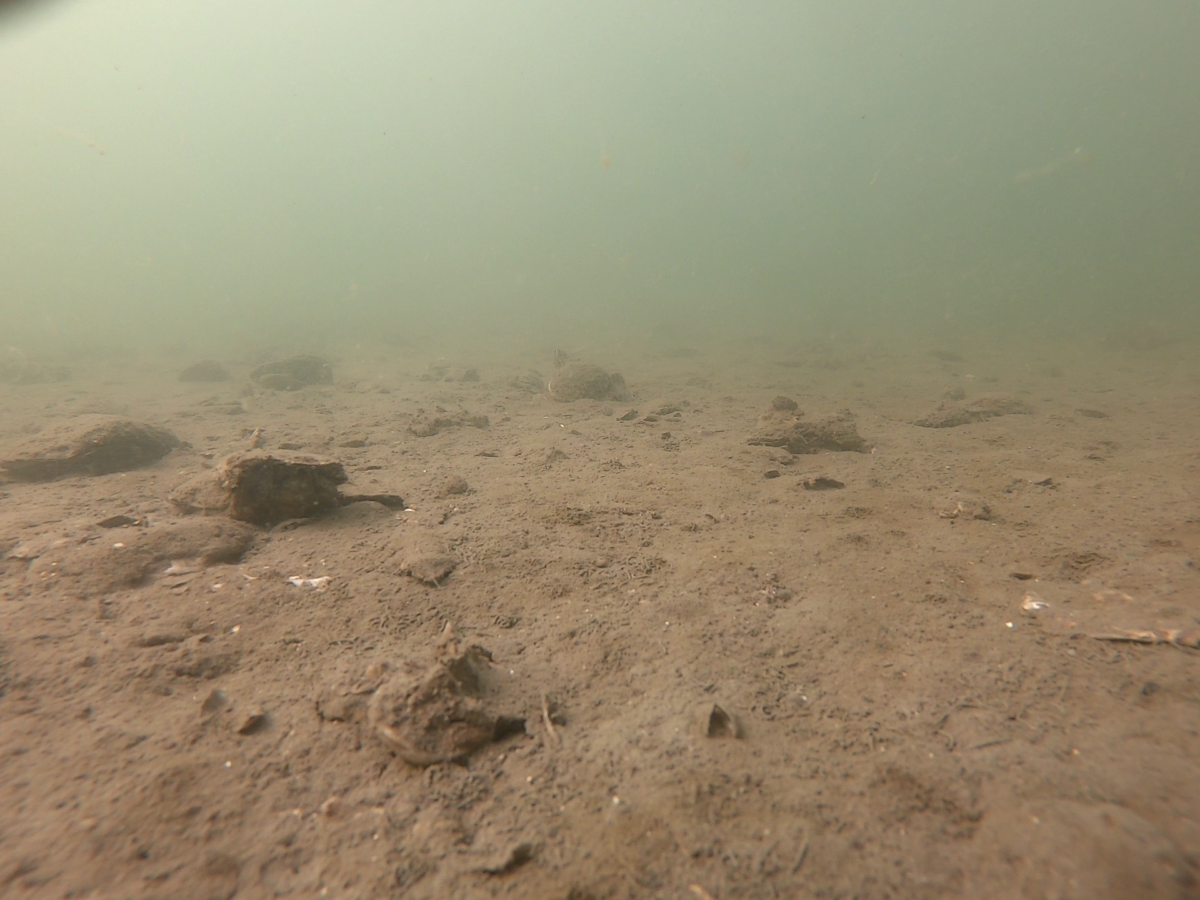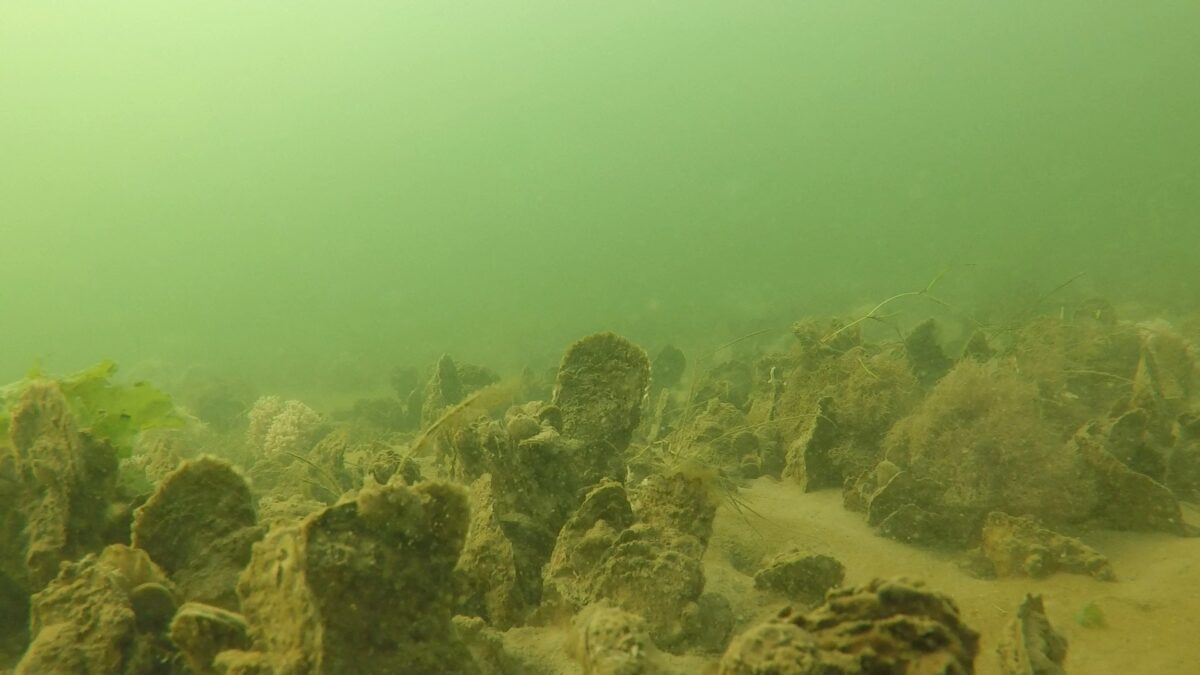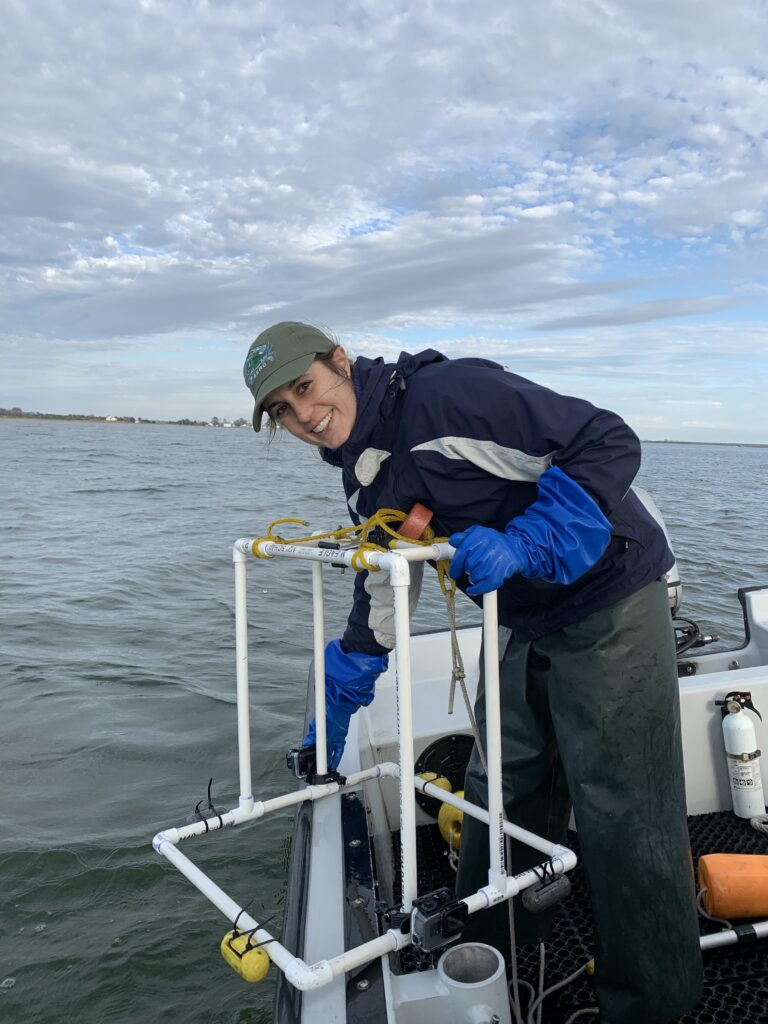A new study used a novel technique to assess types of habitat provided by oyster reefs across 12 tributaries in the Chesapeake Bay. Researchers from UMBC; the University of Maryland, Baltimore (UMB); and the Smithsonian Environmental Research Center (SERC) used underwater cameras to collect images of reef structure at approximately 50 sites in each tributary—a total geographic span of 134 miles. They also repeatedly sampled habitat in two of the tributaries in 2017, 2019, and 2021 to track change over time.
The study included sites in Maryland and Virginia with a wide range of salinities. The team observed restored and unrestored reefs, oyster sanctuaries, and harvested reefs. The results indicate that unharvested reefs and restored reefs had the most complex reef structures, including more surface area covered with oysters and greater reef height, meaning the height of the reef above the bay bottom. Complex reef structure tends to create richer habitat for oysters and other bay wildlife, such as fish and crustaceans. The role of salinity was more nuanced and depended on a reef’s restoration and harvest status.
“Managing harvest and managing restoration are two of the biggest tools that managers have,” says Allison Tracy, assistant professor of marine biotechnology at UMBC/UMB and lead author on the new study. “It’s interesting to see at this scale that we’re able to pick up important contributions to habitat patterns from harvest, restoration, and salinity together.”
The sites tracked over time all saw an overall upward trend in habitat scores over the years of the study, which is good news for the bay and people who depend on it. “Reefs that were unharvested and restored maintained a higher habitat score more consistently over that time period,” Tracy explains.


New technique addresses longstanding challenges
In the new study, published in Marine Ecology Progress Series, “we used underwater photography to solve two big challenges to understanding restoration success,” says Matthew Ogburn, senior scientist at SERC and senior author on the new paper. Previous studies have primarily focused on oysters themselves, rather than the habitat their reefs generate, and different monitoring techniques are not always comparable, he explains. Ogburn and Keira Heggie, another SERC scientist and co-author on the paper, previously published a paper outlining the new underwater camera technique.
“Using one simple method of assessing oyster reefs allowed us to survey a large number of sites efficiently and to make comparisons among all different types of oyster reefs,” Ogburn explains. “Our research supports the idea that oyster restoration results in more oysters but also more complex reefs that provide habitat for other species.”
While restoring reefs and designating some reefs as sanctuaries for oysters are important, “the solution is not to stop harvesting,” Tracy says. The authors note that harvested reefs still provide important, if different, habitat. For example, some species prefer sparser reefs.
“Those harvested reefs are still providing habitat,” Tracy says. “It’s not that habitat on harvested reefs is not important, they’re just contributing something different while also having economic importance.”
The best place for oyster reef research

Moving forward, the research team hopes to build on this work. Tracy and coauthors are working on a forthcoming paper that uses more-intensive sampling methods at a subset of the study sites to verify the results from the rapid assessment technique. The team would also like to find creative ways to collect more underwater data at each site to identify which other species are using the reefs—but right now that effort is limited by the camera’s battery life.
The authors would also like to find ways to use machine learning to analyze the images, making that process more efficient while retaining a human’s level of accuracy. To date, this application of machine learning has proven less accurate than human analysis—but that may change in the future.
For this study, co-author and dedicated SERC citizen scientist David Norman analyzed all the images to determine reef habitat scores. Having one person score all the images for surface cover and reef height improves consistency considerably, but computerized scoring could help achieve this consistency across multiple studies going ahead. SERC is also testing whether crowd-sourcing the image analysis could be an effective way to increase consistency and efficiency.
There is much work ahead, but the new study provides an important large-scale perspective on the relationships between management practices, environmental conditions, and reef habitat across the Chesapeake Bay.
With significant restoration efforts underway, a wide range of management practices in use, and strong engagement from conservation organizations, fisheries, state governments, and local citizens, Tracy is grateful to be conducting research on one of the largest estuary systems in the world, noting, “We’re really fortunate that Chesapeake Bay is such a great place to do this research.”
Tags: CNMS, MarineBiotech, Research

